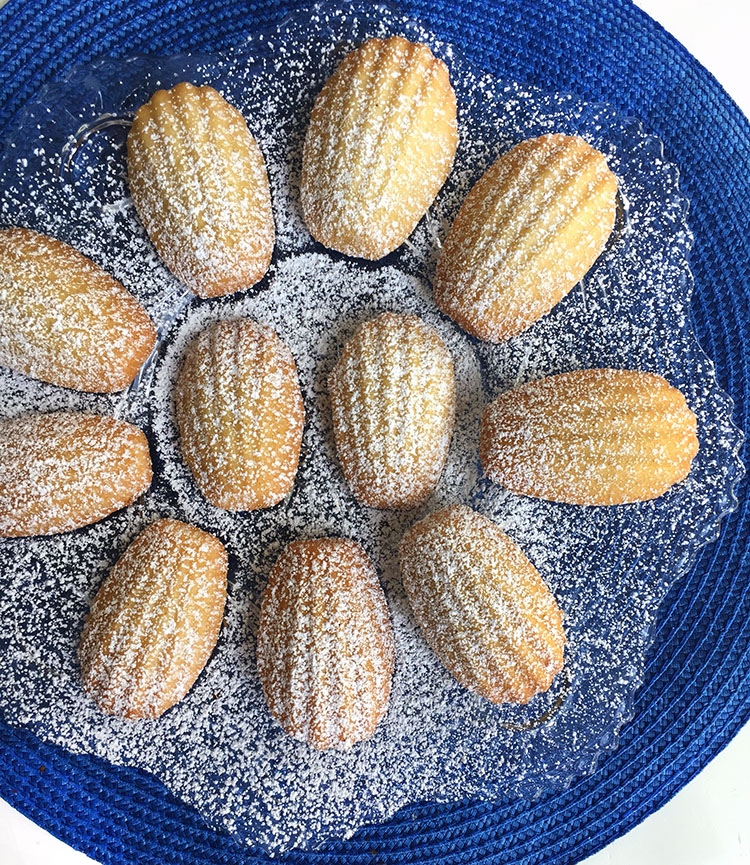
My first bite of madeleine, a yummy little shell-shaped pound cake/cookie, did not release a flood of remembrances, as it did Marcel Proust in his writing about the bakery treat in “In Search of Lost Time†(1913):
“…my mother, seeing that I was cold, offered me some tea, a thing I did not ordinarily take. I declined at first, and then, for no particular reason, changed my mind. She sent out for one of those short, plump little cakes called ‘petites madeleines,’ which look as though they had been moulded in the fluted scallop of a pilgrim’s shell. And soon, mechanically, weary after a dull day with the prospect of a depressing morrow, I raised to my lips a spoonful of the tea in which I had soaked a morsel of the cake. No sooner had the warm liquid, and the crumbs with it, touched my palate, a shudder ran through my whole body, and I stopped, intent upon the extraordinary changes that were taking place. An exquisite pleasure had invaded my senses, but individual, detached, with no suggestion of its origin. And at once the vicissitudes of life had become indifferent to me, its disasters innocuous, its brevity illusory–this new sensation having had on me the effect which love has of filling me with a precious essence; or rather this essence was not in me, it was myself. I had ceased now to feel mediocre, accidental, mortal. Whence could it have come to me, this all-powerful joy? I was conscious that it was connected with the taste of tea and cake, but that it infinitely transcended those savours, could not, indeed, be of the same nature as theirs. Whence did it come? What did it signify? How could I seize upon and define it?â€
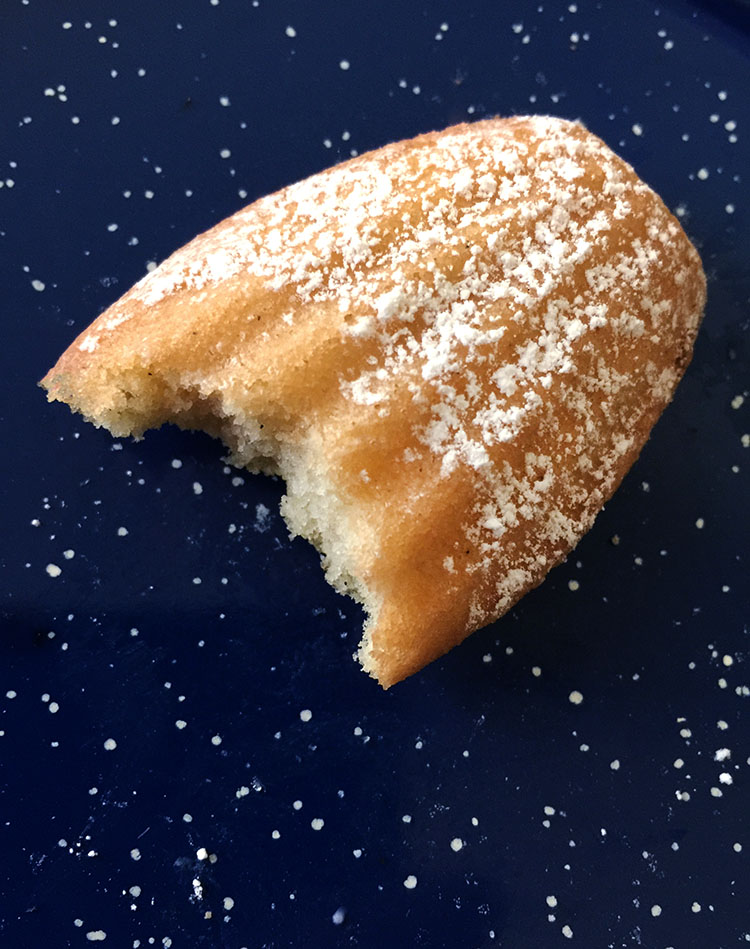
[M]y first madeleine was in a coffeehouse, eaten from its little plastic sleevlet package. Even still, one taste made me a fan forever. Even It was a delightful surprise — delicately textured, yet sturdy and just the right light flavors of vanilla, egg and butter. I was smitten. Soon, I was baking madeleines myself. Plain madeleines, delicious enough to satisfy were my starter rendition, but I’ve also added coconut, made aromatic versions of lemon and lavender and even gilded orange madeleines with dips in dark chocolate. I carried madeleine pans in my suitcase to make them for my mom in Kansas. I’ve not only made them myself, but enjoyed eating scores of them from bakeries and other equally madeleine-passionate bakers as my friend, Elaine, who has blessed me with many yummy creations she brought to work.
I was re-reminded of madeleines recently (it doesn’t take but a whiff of notice to redirect me to my Madeleine pans in a heartbeat), when I purchased “The Official Downton Abbey Afternoon Tea Cookbook†(Weldon Owen; 2020). I became a “Downton Abbey†fan late, just after the pandemic started and some four years since the PBS series ended. But I wouldn’t trade my first time watching this series — whenever it happened — for anything, as I fell in love with the English countryside, the grand estates, the enchanting characters, and the ordered and orderly ways of the early 20th century. It was a delight from start to finish (two times through!). It was a great escape into another time and place, perfect for the strangeness of present day.
[P]art of the fun, for me, of “Downton Abbey,†was watching all the food and food preparation and the many timed sit-down feedings folks were accustomed to, including afternoon tea, where such a thing as a madeleine was often served. According to the cookbook, it was also the cookie or “biscuit†of choice for the young ladies’ biscuit jars they kept in their bedrooms in case they needed a snack.
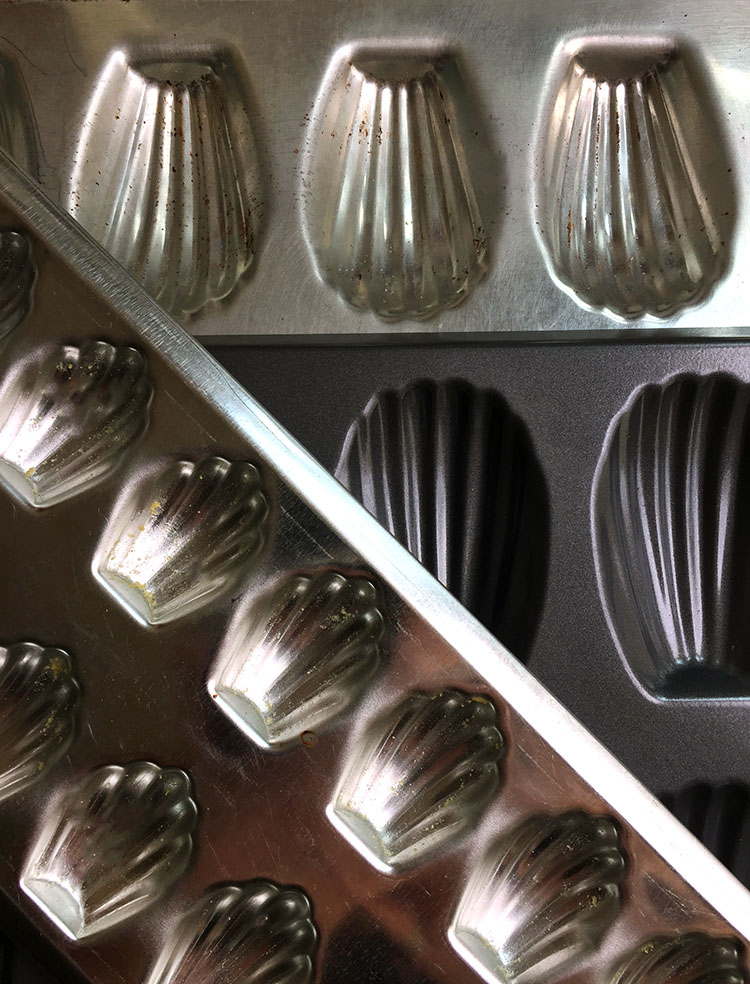
[I] don’t blame them. I completely understand anyone’s affection for these French-originated and worldwide-enjoyed little treats. Truth be told, madeleines are really easy and quick to make, your main hurdle would be in purchasing a Madeleine pan (not often among most basic baking pan rosters). One pan usually has 12 Madeleine cavities. I have maybe four madeleine pans (I am instantly cheered and also longing when I see them in the cupboard), including one for tiny miniature-sized cookies.
I do recommend a nonstick Madeleine pan of good quality if you are going to make Madeleines (and once you do, you’ll probably make many more), although I’ve had success with making them in non-stick pans, too.
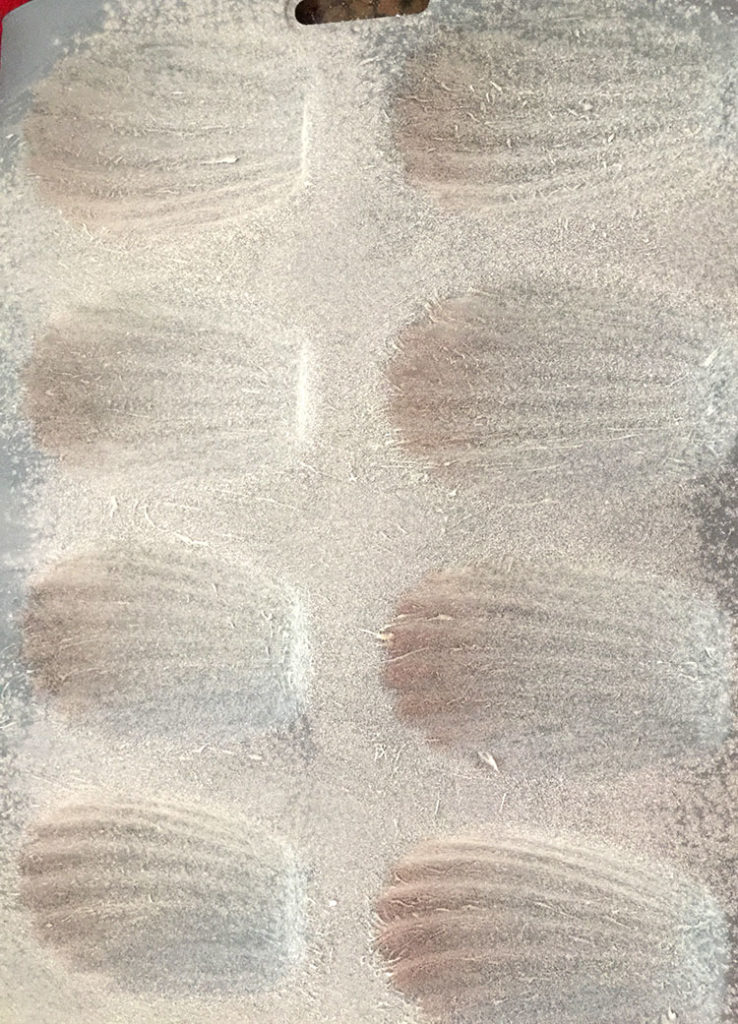
[I] would say that, no matter what kind of pan you use, the buttering and flouring of it is extremely important. Yes, some nonstick pans don’t require this, but I’d do it anyway. And yes, there are baking sprays, but I would use the butter-and-flouring method anyway, because it achieves not only a successful release of the cookies, but imparts the best even golden imprint of that traditional scallop shell of a madeleine.
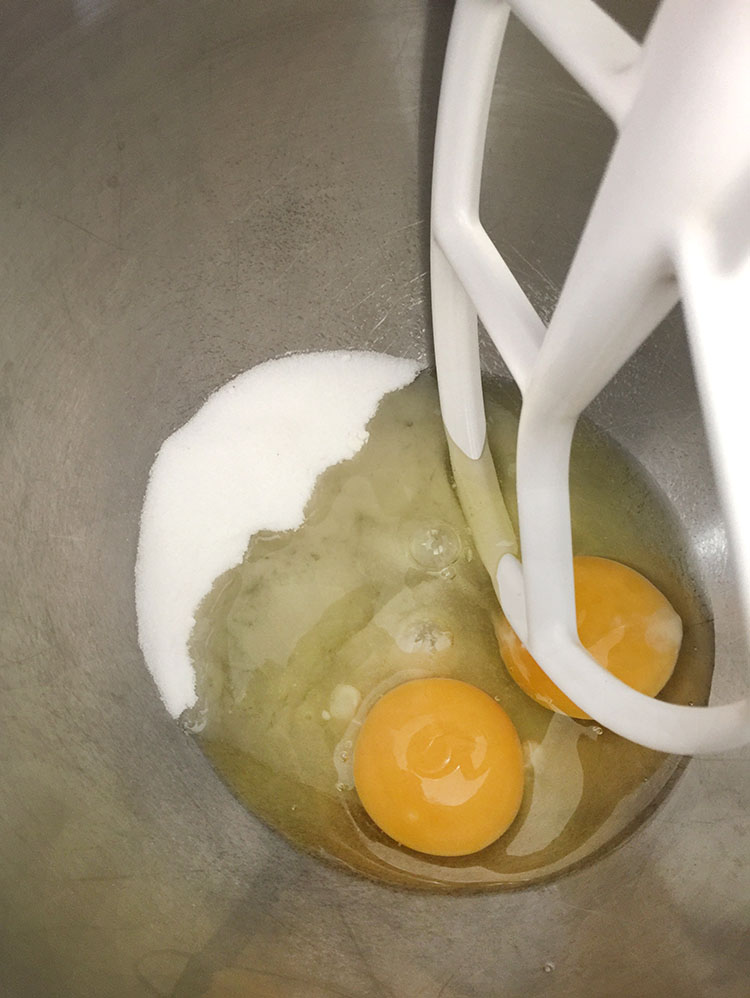
[T]he madeleine recipe I tried from the “Downton Abbey†book was as perfect as they come — straightforward, simple and successful. It begins as most madeleines do with the beating of eggs, sugar and salt for about 5 minutes or until fluffy, which is ideal in giving the cookies their light and airy texture.
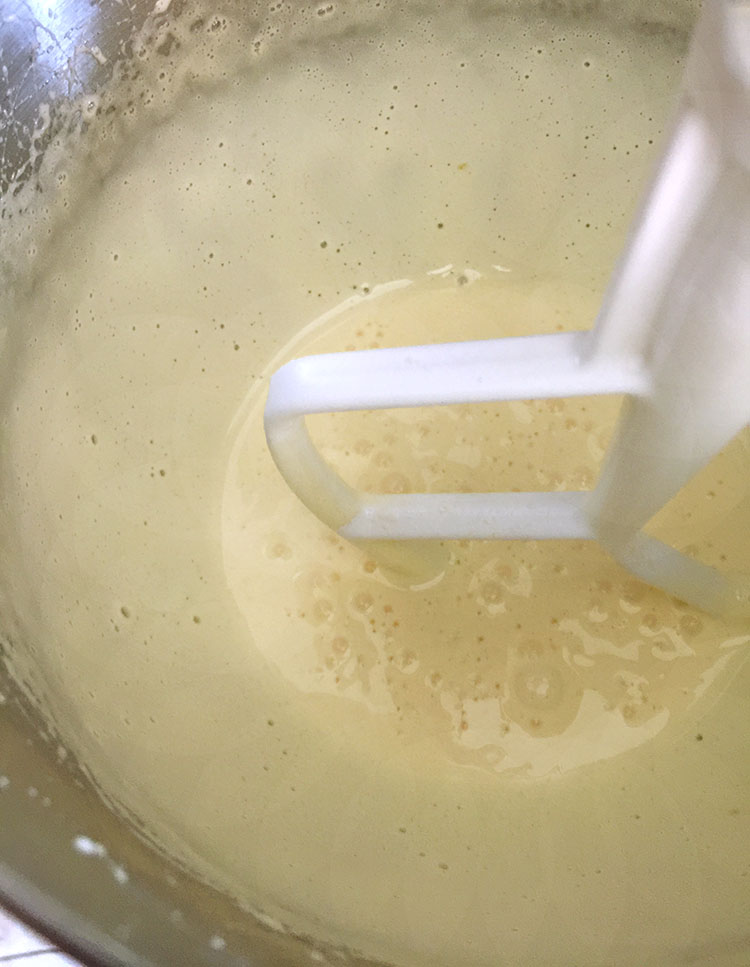
Vanilla extract is then added and mixed in. A small amount of flour is sifted over and mixed into the batter. Then butter, melted and cooled, is folded into the batter until just incorporated. That’s it!
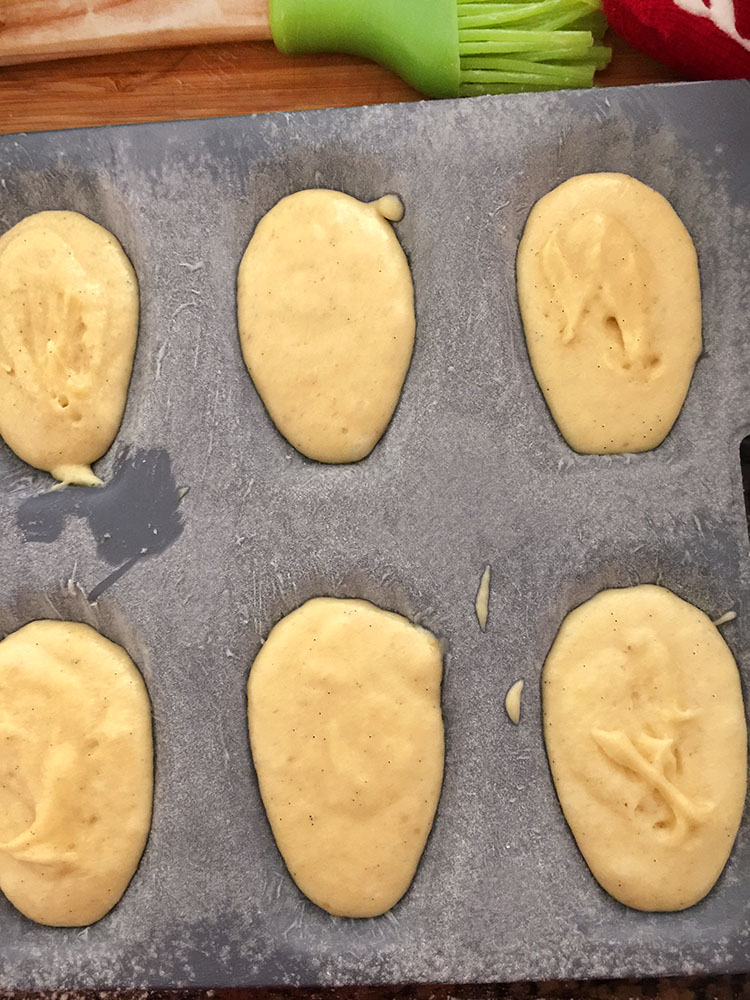
[A] mere heaping tablespoon is dolloped (gently) into each shell cavity of the madeleine pan. Then they are off to bake for just 10 to 12 minutes (or until they spring back lightly when they are touched) at 375°.
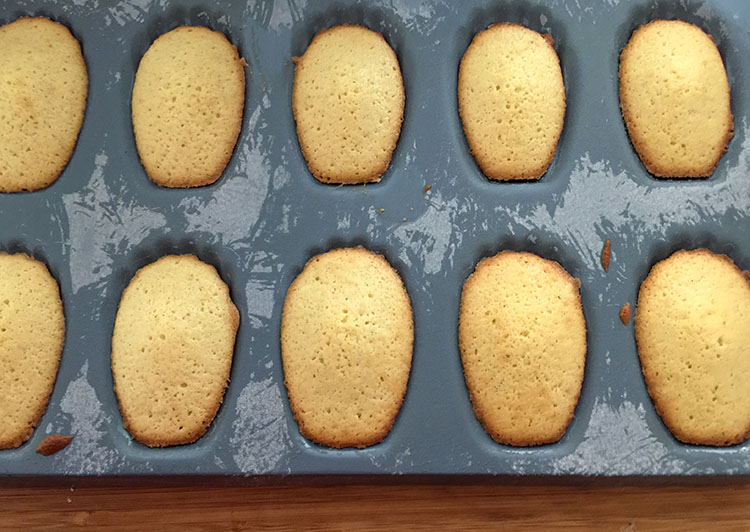
[I] know this recipe was a good when when the batter filled exactly 12 cavities and once they were baked, they had just the right slightly rounded tops (I’ve had madeleines puff up too much in other recipes).
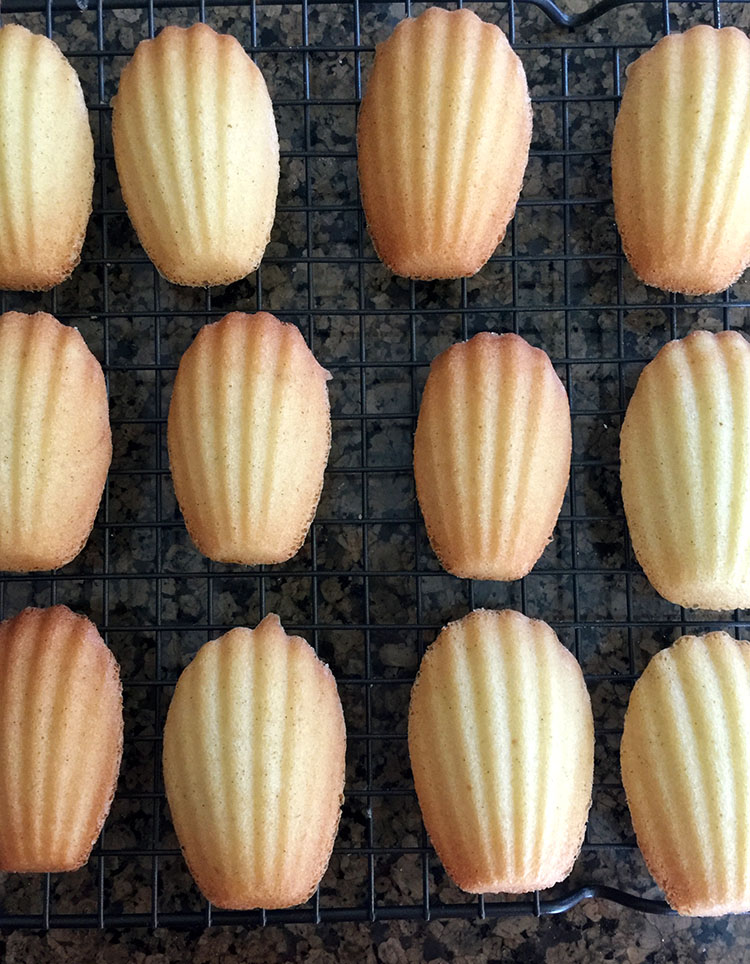
[T]he madeleines are released right after baking, tumbling out in golden-brown cakes that look like shells. It’s tempting to bite into them straightaway, but best to wait for their simple finish.
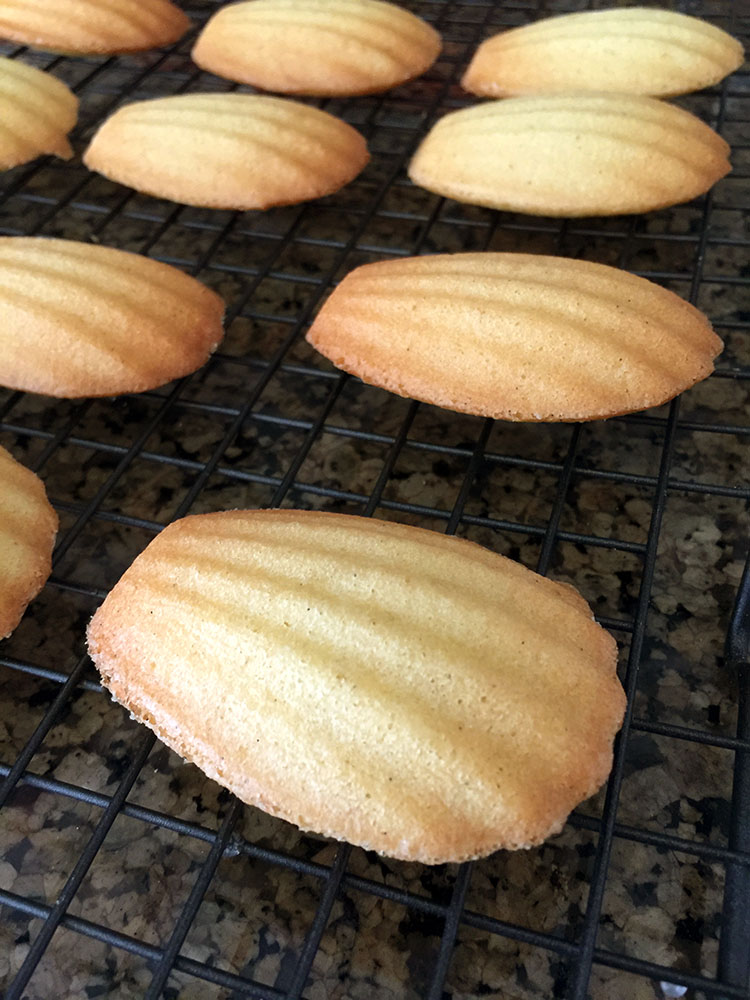
[Y]ou don’t have to sprinkle the madeleines with a dusting of powdered sugar, but it raises their sweet appeal even further, and also makes them look a little more festive.
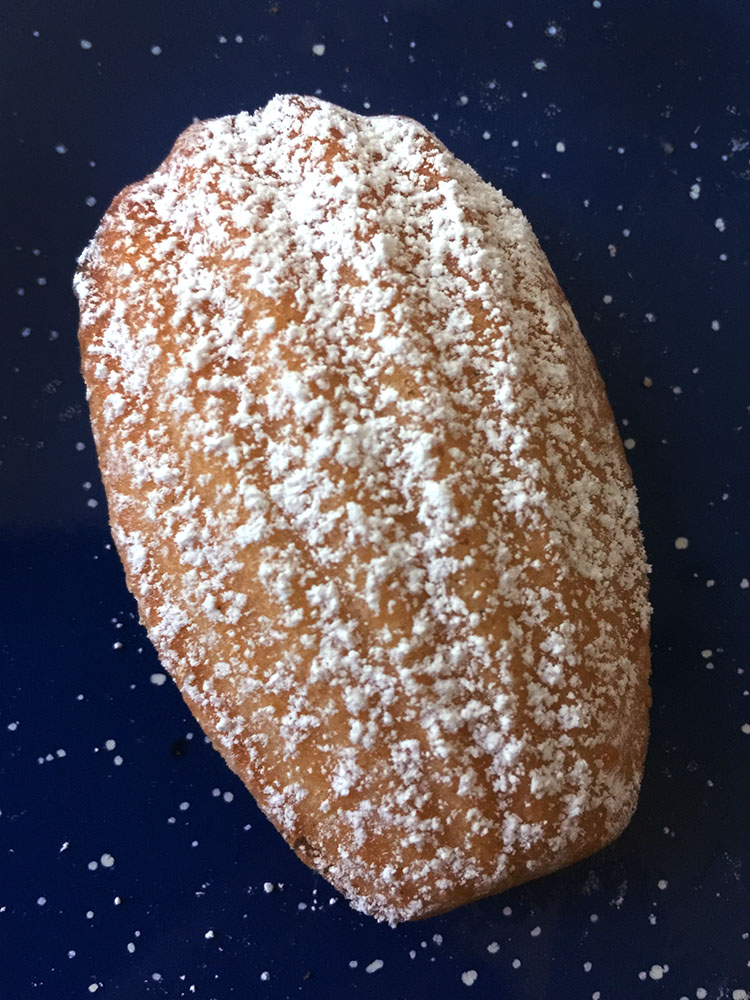
[T]hese charming little sweets, with their long history and simplicity, are the perfect bite of vanilla cake in cookie form, just right. Their light airiness makes them perfect for a dip in coffee or tea, taking on some juiciness from your favorite beverage.
Madeleines
From “The Official Downton Abbey Afternoon Tea Cookbook†(Weldon Owens; 2020)
Makes 12
- 4 tablespoons unsalted butter, melted and cooled, plus room temperature butter for the pan
- 1/2 cup flour, plus more for the pan
- 2 eggs
- 1/3 cup granulated sugar
- 1/4 teaspoon salt
- 1 teaspoon pure vanilla extract
- Confectioner’s sugar for dusting (optional)
Preheat the oven to 375°F. Using a pastry brush, coat the 12 molds of a Madeleine pan with room-temperature butter, carefully coating each and every ridge. Dust the molds with flour tilting the pan to coat evenly and then tipping out the excess.
In a bowl, using an electric mixer, beat together the eggs, granulated sugar, and salt on medium-high speed until light and fluffy, about 5 minutes. Beat in the vanilla. Turn off the mixer and sift the flour over the egg mixture. With the mixer on low speed, beat in the flour until fully incorporated. Turn off the mixer again and, using a rubber spatular, gently fold in half of the melted butter just until incorporated, Fold in the remaining melted butter just until blended.
Scoop a heaping tablespoon of the batter into each prepared mold. Bake the madeleines, rotating the pan back to front halfway through the baking, until the tops spring back when lightly pressed with a fingertip, 10 to 12 minutes. Remove the pan from the oven, Immediately invert it onto a wire rack and tap the pan on the rack to releasee the madeleines. If any of them stick, turn the pan upright, loosen their edges with a butter knife, and then invert and tap again. Let cool completely. If desired, lightly dust the tops with confectioner’s sugar just before serving.